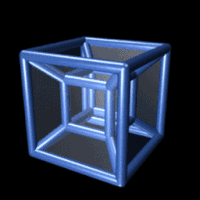
Photo from wikipedia
The three-dimensional characteristics of the flow past four square cylinders in an in-line square configuration, with five spacing ratios ranging from 1.4 to 5, were studied in depth in this… Click to show full abstract
The three-dimensional characteristics of the flow past four square cylinders in an in-line square configuration, with five spacing ratios ranging from 1.4 to 5, were studied in depth in this study. Direct numerical simulation of the spectral/hp element method was employed at Re = 150 and 200. The onset and evolution of various unstable modes were expounded in detail by means of three-dimensional vortices, energy curves, wake patterns, and force coefficients. At each spacing, the three-dimensional instability and the corresponding flow pattern were comprehensively analyzed to illustrate transitional features. Except for the existence of unstable mode A and mode B when spacing was considerably small and large, for most of the intermediate spacing ratios, the vortex structures were dominated by mode C instability, whose flow patterns all appeared as anti-phase synchronization. Through the evolution of flow patterns over time, the three-dimensional effects were already observed at a low Reynolds number of 150 because of the influence of the gap flow and the mutual interference of the wake. Under the transitional spacing for Re = 200, multiple modes were interfering fiercely with each other and appeared as chaotic states. Compared with other bluff body forms, the four square cylinders generated numerous discrepancies and new modal transitions in three-dimensional cases.The three-dimensional characteristics of the flow past four square cylinders in an in-line square configuration, with five spacing ratios ranging from 1.4 to 5, were studied in depth in this study. Direct numerical simulation of the spectral/hp element method was employed at Re = 150 and 200. The onset and evolution of various unstable modes were expounded in detail by means of three-dimensional vortices, energy curves, wake patterns, and force coefficients. At each spacing, the three-dimensional instability and the corresponding flow pattern were comprehensively analyzed to illustrate transitional features. Except for the existence of unstable mode A and mode B when spacing was considerably small and large, for most of the intermediate spacing ratios, the vortex structures were dominated by mode C instability, whose flow patterns all appeared as anti-phase synchronization. Through the evolution of flow patterns over time, the three-dimensional effects were already observed at a low Reynolds number of 150...
Journal Title: AIP Advances
Year Published: 2020
Link to full text (if available)
Share on Social Media: Sign Up to like & get
recommendations!